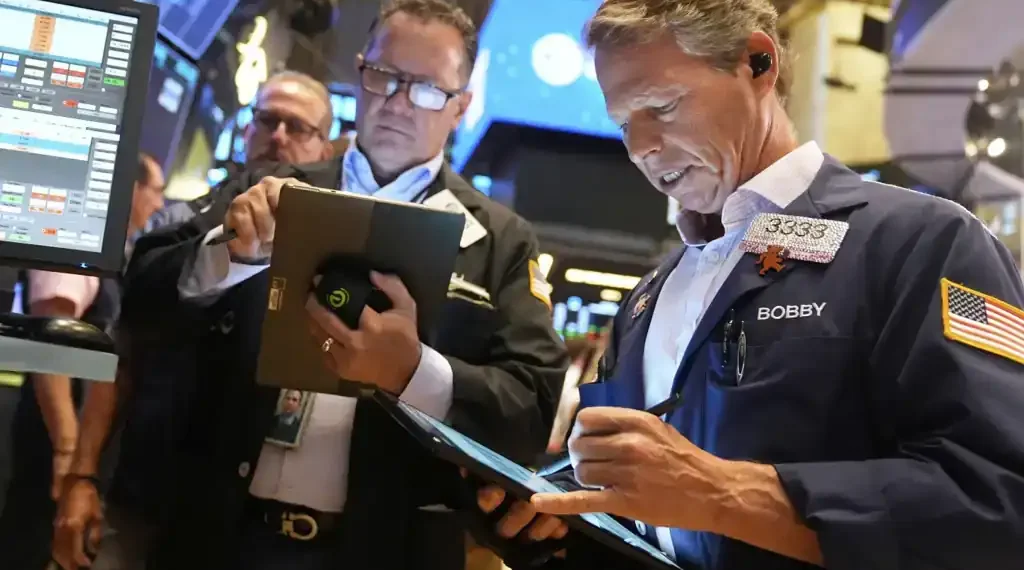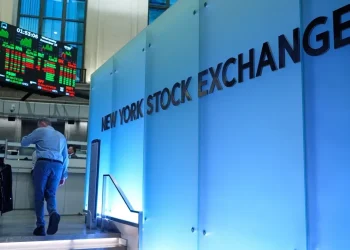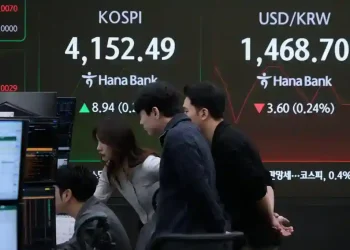Microsoft, Meta rally pushes Wall Street closer to record highs
Written: July 31, 2025, 15:00 U.S. Eastern Time
Tech stocks led Wall Street higher on Thursday as major companies like Microsoft and Meta Platforms delivered impressive earnings, propelling key indexes toward new records. The surge came even as inflation data and tariff uncertainties continued to weigh on the broader economic outlook.
S&P 500 and Nasdaq move toward new records
Stocks opened strong Thursday morning, extending their upward momentum fueled largely by optimism in the technology sector. As of 11:01 a.m. Eastern Time, the S&P 500 rose 0.2%, coming within range of its record high set earlier in the week. The Nasdaq Composite jumped 0.8%, supported by major tech stock gains, while the Dow Jones Industrial Average remained mostly flat.
The rally was primarily driven by earnings from large-cap tech firms, whose performance and future outlook continue to be shaped by advancements in artificial intelligence (AI).
Meta and Microsoft earnings exceed expectations
Meta Platforms, the parent company of Facebook and Instagram, surged by 11.2% after the company significantly beat Wall Street’s second-quarter expectations on both revenue and profit. Meta’s continued investment in AI technologies is seen as a long-term growth strategy that resonated with investors.
Microsoft shares also rose, up 4.4% on the day, following a strong earnings report. Particularly noteworthy was an encouraging update on Azure, Microsoft’s cloud computing division and a key component of its AI ecosystem. The results underscored the company’s leading role in the ongoing AI-driven transformation across sectors.
The tech momentum is expected to continue as Apple and Amazon prepare to release their earnings after the closing bell. These companies, along with Microsoft and Meta, have been the primary drivers behind the market’s recent rally, driven by growing investor confidence in AI’s future.
Strong earnings reported beyond tech
Outside of the technology sector, other major companies also posted solid earnings that helped sustain the market’s overall performance.
CVS Health rose 3.3% after exceeding Wall Street expectations and raising its full-year guidance. The healthcare giant’s strong quarterly results added further depth to a week already packed with corporate earnings reports across sectors.
Earnings remain a primary focus for investors as companies navigate a complicated macroeconomic environment shaped by inflation, interest rates, and trade policy.
Inflation edges higher, raising policy questions
Economic data released Thursday morning showed inflation ticked up slightly in June. According to the U.S. Commerce Department, the Personal Consumption Expenditures (PCE) index, the Federal Reserve’s preferred inflation measure, increased by 2.6% compared to June of last year. That’s up from 2.4% in May and slightly higher than economists’ expectations.
Earlier this month, the Consumer Price Index (CPI) also indicated a rise in inflation, reinforcing concerns that price pressures remain sticky despite the Fed’s ongoing efforts to bring inflation closer to its 2% target.
In addition, weekly jobless claims data showed a small uptick in Americans filing for unemployment benefits. While not alarming on its own, it adds complexity to the Fed’s balancing act between supporting employment and controlling inflation.
Fed maintains interest rates amid economic uncertainty
Amid this backdrop, the Federal Reserve chose to leave its benchmark interest rate unchanged for a fifth consecutive meeting. Officials continue to monitor inflation trends carefully before making any decision on rate cuts.
While lower interest rates could support job growth and boost economic activity, the risk of reigniting inflation remains a central concern. Fed Chair Jerome Powell has reiterated that any decision on rates is made collectively by the Federal Open Market Committee (FOMC), despite political pressure.
President Donald Trump has publicly called for rate cuts to stimulate the economy, but the Fed has opted for caution, especially given the volatile economic signals and ongoing trade policy disruptions.
Trade tensions reemerge with tariff threats
Trade policy uncertainty added another layer of market risk this week. On Wednesday, President Trump signed an executive order imposing 50% tariffs on imports from Brazil, citing political motivations tied to the trial of Brazil’s former president Jair Bolsonaro, a known ally.
Trump has also threatened broader tariffs on goods from multiple countries unless new trade agreements are reached by Friday. Negotiations with China appear to have paused escalations for now, and a tentative deal with South Korea has been announced. However, businesses remain on edge as Trump’s trade decisions continue to defy traditional economic strategy.
Major U.S. companies including Ford and Hershey’s have warned in recent weeks that tariffs are affecting both current and projected earnings.
Rate cut expectations cooling ahead of September
Investor expectations for a Fed rate cut in September are fading. According to data from CME Group, traders now see only a 39.2% probability of a rate cut at the next meeting. That’s down from 58.4% a week ago and 75.4% a month earlier.
The shifting sentiment reflects growing doubts about whether inflation will cool enough in the near term to justify a cut, even as some sectors of the economy show signs of softening.
Bond yields ease amid cautious optimism
In the bond market, yields fell slightly. The 10-year U.S. Treasury yield dropped to 4.34%, down from 4.37% on Wednesday. Meanwhile, the 2-year yield declined to 3.92% from 3.94%.
Lower yields suggest that investors remain cautious about future growth, even as equities rally on strong earnings and AI optimism.
Global markets mixed as U.S. tech leads
Overseas markets were mostly mixed on Thursday. Asian stocks were generally flat, while European markets saw modest gains in response to the U.S. tech surge.
As the week progresses, investors will continue to monitor a steady stream of earnings reports, economic data, and policy signals that could influence the trajectory of the market into the second half of the year.
This article was rewritten by JournosNews.com based on verified reporting from trusted sources. The content has been independently reviewed, fact-checked, and edited for accuracy, neutrality, tone, and global readability in accordance with Google News and AdSense standards.
All opinions, quotes, or statements from contributors, experts, or sourced organizations do not necessarily reflect the views of JournosNews.com. JournosNews.com maintains full editorial independence from any external funders, sponsors, or organizations.
Stay informed with JournosNews.com — your trusted source for verified global reporting and in-depth analysis. Follow us on Google News, BlueSky, and X for real-time updates.














